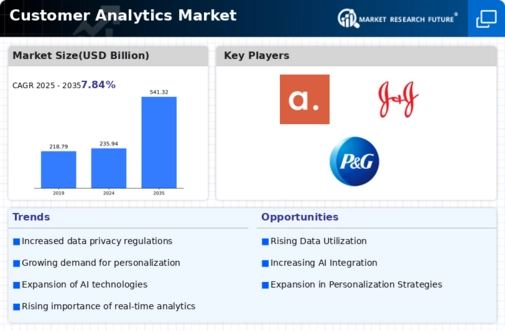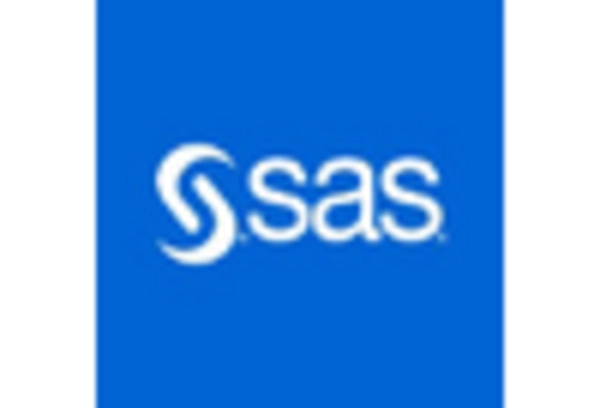The customer analytics market is currently characterized by intense competition and rapid evolution, driven by the increasing demand for data-driven decision-making across various sectors. Key players such as Salesforce (US), Adobe (US), and IBM (US) are at the forefront, leveraging advanced technologies to enhance their offerings. Salesforce (US) focuses on integrating AI capabilities into its analytics solutions, thereby enabling businesses to derive actionable insights from customer data. Adobe (US), on the other hand, emphasizes its strengths in digital marketing analytics, positioning itself as a leader in customer experience management. Meanwhile, IBM (US) is concentrating on cloud-based analytics solutions, which allows for greater scalability and flexibility in data management. Collectively, these strategies not only enhance their competitive positioning but also contribute to a dynamic market landscape where innovation is paramount.
In terms of business tactics, companies are increasingly localizing their operations and optimizing supply chains to better serve regional markets. The competitive structure of the customer analytics market appears moderately fragmented, with several players vying for market share. However, the influence of major companies is substantial, as they set benchmarks for technology adoption and customer engagement strategies. This competitive environment fosters a culture of continuous improvement and adaptation, compelling smaller firms to innovate or risk obsolescence.
In October 2025, Salesforce (US) announced a strategic partnership with a leading AI firm to enhance its predictive analytics capabilities. This collaboration is expected to bolster Salesforce's ability to provide more accurate customer insights, thereby improving client retention and satisfaction. The strategic importance of this move lies in its potential to position Salesforce as a frontrunner in the AI-driven analytics space, allowing it to differentiate its offerings in a crowded market.
In September 2025, Adobe (US) launched a new suite of tools aimed at integrating customer journey analytics with real-time data processing. This initiative is significant as it aligns with the growing trend of real-time analytics, enabling businesses to respond swiftly to customer behaviors and preferences. By enhancing its product suite, Adobe (US) not only strengthens its market position but also addresses the evolving needs of its clients in a fast-paced digital environment.
In August 2025, IBM (US) unveiled a new cloud-based analytics platform designed to streamline data integration from various sources. This strategic move is crucial as it reflects IBM's commitment to providing comprehensive solutions that cater to the complexities of modern data environments. The platform's ability to integrate disparate data sources could significantly enhance operational efficiency for businesses, thereby reinforcing IBM's competitive edge in the analytics market.
As of November 2025, the competitive trends in the customer analytics market are increasingly defined by digitalization, sustainability, and the integration of AI technologies. Strategic alliances are becoming more prevalent, as companies recognize the value of collaboration in enhancing their technological capabilities. Looking ahead, it is likely that competitive differentiation will evolve, shifting from traditional price-based competition to a focus on innovation, technological advancement, and supply chain reliability. This transition underscores the necessity for companies to not only invest in cutting-edge technologies but also to foster partnerships that enhance their service offerings.

















Leave a Comment